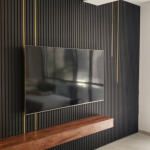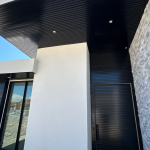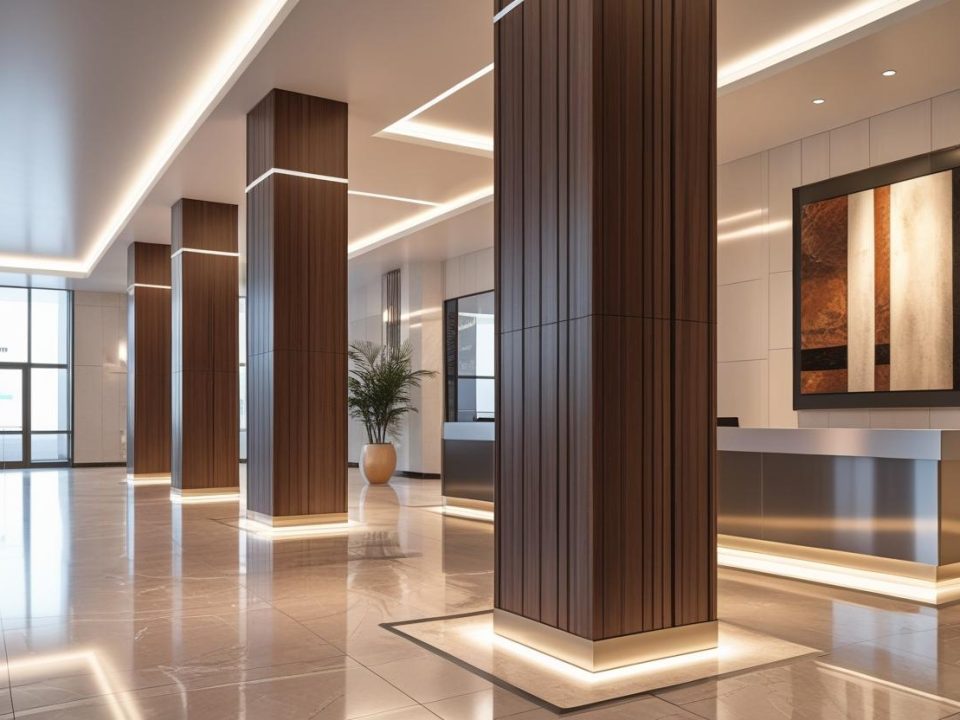
Eco-Friendly Buildings: How Aluminum Cladding Contributes to LEED Ratings

Aluminum Cladding for Harsh Climates: 8 Best Practices

In the wake of numerous high-profile building fires, the safety and fire resistance of building materials have come under increased scrutiny.
Aluminum cladding, widely recognized for its aesthetic and functional benefits, also offers significant fire resistance capabilities.
This has naturally led to increased scrutiny over facade cladding materials, with the industry now emphasizing the use of non-combustible or fire-resistant options. Aluminum cladding stands out in this regard, offering both aesthetic and functional benefits alongside substantial fire resistance capabilities.
As a non-combustible metal, aluminum itself does not burn. Instead, it can endure high temperatures due to its melting point of approximately 660 degrees Celsius, significantly reducing the risk of contributing to fire spread.
Modern aluminum cladding systems that incorporate non-combustible cores, such as those made from fire-resistant mineral compounds, further enhance this intrinsic resistance.
These cores ensure compliance with strict safety standards like ASTM E84 and NFPA 285, which specifically assess flame spread and resistance.
This dual-layered protection makes aluminum cladding ideal for maintaining a balance between safety and design, allowing architects to meet both aesthetic desires and regulatory requirements.
Such innovations emphasize the importance of selecting cladding materials that not only look attractive but also offer substantial fire resistance for long-term safety and reliability.
Understanding Aluminum’s Fire Resistance
Aluminum is a material prized for its durability, lightweight nature, and, critically, its fire resistance. Aluminum itself is non-combustible, which means it does not burn. In the context of building fires where temperatures can escalate dramatically, aluminum can withstand considerable heat without catching fire.
Its melting point is around 660 degrees Celsius (1220 degrees Fahrenheit), significantly higher than the temperatures most building materials can endure before deteriorating.
However, aluminum cladding systems often involve more than just pure aluminum. They typically consist of aluminum panels that may include different cores, which can affect their fire resistance.
For example, aluminum composite panels (ACPs) are made of two thin aluminum sheets bonded to a core material, which historically has included flammable materials like polyethylene.
This composition necessitated stringent regulations and reforms in the use of ACPs in construction to avoid fire risks.
Advances in Fire-Resistant Aluminum Cladding
The construction industry has responded to fire safety concerns by innovating and improving aluminum cladding systems.
Modern fire-resistant aluminum cladding utilizes cores made from non-combustible materials or thermally stable minerals that significantly reduce or eliminate the risk of contributing to fire spread.
For instance, some aluminum composite materials now feature cores that are primarily composed of minerals that are fire-resistant, such as the Alfrex FR metal composite material, which includes a fire-resistant core bonded to aluminum skins.
This design meets stringent fire safety standards like ASTM E84 and NFPA 285, ensuring that it doesn’t contribute to fire propagation.
Recent advances in fire-resistant aluminum cladding reflect the construction industry’s commitment to improving building safety. Previously, many aluminum composite panels (ACPs) contained cores made of polyethylene, a highly flammable polymer that raised significant fire concerns.
Today, manufacturers have shifted to cores made from non-combustible or fire-resistant mineral compounds. For instance, Alfrex FR is a metal composite material that bonds aluminum skins to a fire-resistant mineral core.
Such innovations have helped these panels achieve compliance with stringent fire safety standards, including ASTM E84 and NFPA 285, which test for flame spread and resistance.
By employing these non-combustible cores, manufacturers have significantly reduced the chances of cladding systems contributing to a building facade fire.
Beyond the mineral core, other improvements in aluminum cladding systems include new production methods that minimize panel gaps and seams, which can otherwise act as fire conduits.
The panels’ surface treatment and coatings are also evolving to improve their ability to withstand high temperatures without deteriorating or releasing hazardous fumes.
Together, these advancements help prevent flame spread and offer an added layer of safety to residential and commercial buildings.
By working closely with manufacturers and industry experts, architects and builders can ensure their projects use the latest, safest aluminum cladding materials available.
Benefits Beyond Fire Resistance
Aside from its impressive fire-resistant properties, aluminum cladding offers a variety of other benefits:
Durability: Aluminum is resistant to corrosion and can last up to 50 years with minimal maintenance.
Aesthetic Flexibility: Aluminum can be finished in various ways to suit different architectural styles, from smooth, matte finishes to textured, glossy ones.
Thermal and Acoustic Insulation: When paired with insulated cores, aluminum cladding can enhance a building’s energy efficiency and reduce noise pollution, an essential factor in urban environments.
Environmental Sustainability: Aluminum is 100% recyclable, which supports building practices that are more sustainable and environmentally friendly.
Choosing the Right Aluminum Cladding
When selecting aluminum cladding for a project, it’s essential to consider the specific needs of your building in terms of safety, aesthetics, and environmental impact. Ensure that the product you choose complies with local building codes and standards regarding fire safety.
Manufacturers now provide detailed information about the fire resistance ratings of their products, making it easier for architects and builders to make informed choices.
Selecting the right aluminum cladding requires a thorough evaluation of your building’s specific requirements. Buildings in high-density urban areas may need to prioritize fire resistance, given the greater potential for fire spread.
Aluminum cladding panels that utilize fire-resistant cores should be a top consideration for such locations, as these cores can significantly enhance the safety of the facade.
Additionally, the material’s aesthetic flexibility is crucial; architects can leverage the variety of finishes and colors to create facades that seamlessly blend with the surrounding architecture or make bold statements.
Each finish or color may influence the thermal and acoustic properties of the building, so it’s essential to choose one that aligns with your project’s energy efficiency goals.
Furthermore, environmental impact plays a growing role in the selection process. Look for aluminum cladding systems that use recyclable materials and are manufactured sustainably.
Companies often provide detailed information regarding the sourcing of materials and the environmental certifications their products have obtained.
When combined with local fire safety standards, this comprehensive data allows architects and builders to make decisions that balance safety, sustainability, and aesthetics.
Ultimately, engaging with manufacturers directly can provide further guidance, ensuring the cladding you select is perfectly suited to your unique project needs.
Conclusion
Aluminum cladding remains a popular choice for modern construction due to its combination of aesthetic appeal, longevity, and safety features. As building standards evolve and focus increasingly on safety, the innovations in aluminum cladding make it a safe and stylish option for building exteriors.
For those planning construction projects, exploring the advanced fire-resistant capabilities of aluminum cladding systems should be a priority.
For further details on aluminum cladding options and their applications, considering consulting with manufacturers and experts who can provide insights and product recommendations tailored to your project’s specific requirements.
This proactive approach ensures that your building not only looks great but is also built to the highest safety standards.
Get in touch with us now to discover the ways our aluminum cladding options can elevate your upcoming project.





